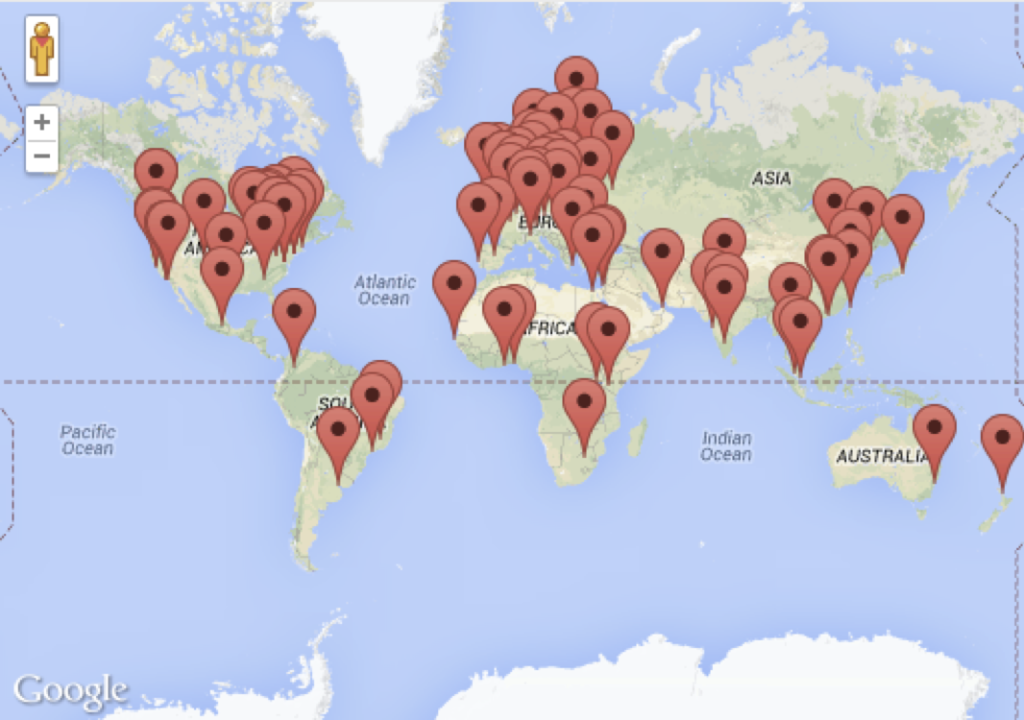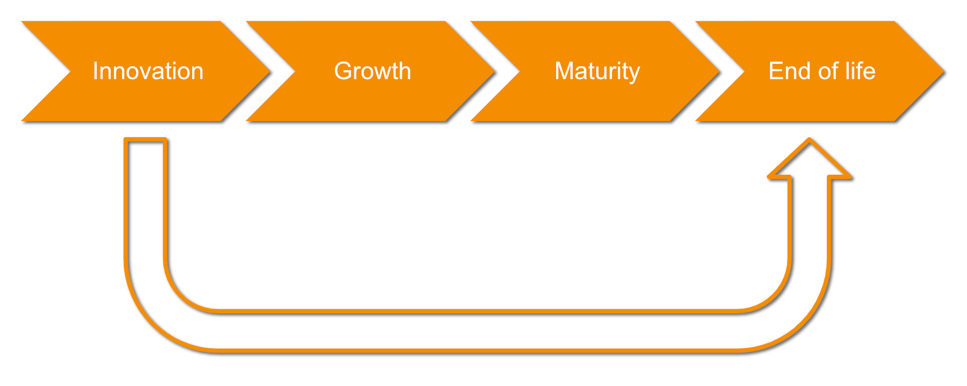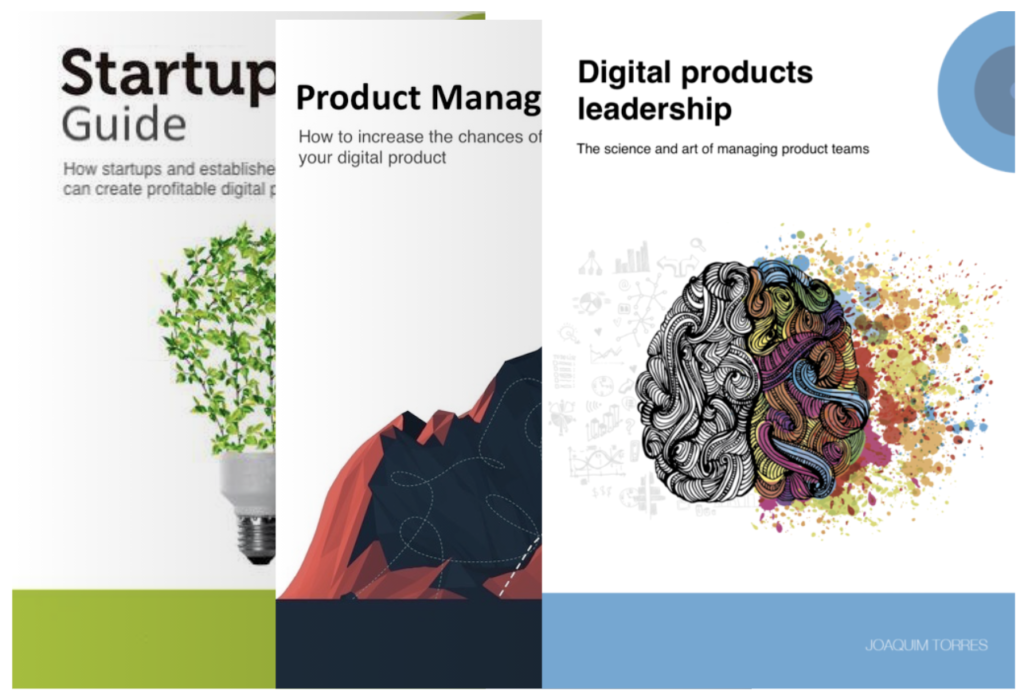Does the shoemaker’s son always go barefoot?
31 de January, 2023How to diversify your product portfolio?
13 de February, 2023Why do some companies decide to have more than one product? How do they manage this product portfolio? Why do other companies prefer to focus on a single product? Focus or diversification, which is the most appropriate strategy? How to organize the product development team according to the chosen strategy?
These topics are what I consider to be advanced topics in digital product management, and that’s what we’ll see in this and the following articles!
Are you thinking about your new product? No? So you are already late!
Did you know that Google has 177 active and 79 discontinued products? These are the statistics from Google just before it announced Alphabet in August 2015.
And how many offices has Google spread around the world? I tried to count on the map below but couldn’t. It looks more like a map of the board game War, with Google conquering the world.

Locaweb, in due proportion, also has a similar strategy. In 2016, we had over 25 products, and we have already discontinued over 10. In addition, Locaweb has offices in Porto Alegre, Marília, and Blumenau.
Another example is Caelum, which has in-house software development consulting and software development classes in Sao Paulo, Rio de Janeiro, and Brasilia. It had an on-demand software development service that was discontinued and created an online learning service, and it also became a publisher.
Why do these companies use this strategy of portfolio diversification and new markets?
To answer this question, we will need to recall some concepts of the technology adoption curve that we saw in the chapter How does the lifecycle of a software product work?:
- Innovation: this is the phase in which the new product is created. At this stage, the product is still incomplete and has errors, but people who like to try new things love using them and always want to be the first to try them out. This is the stage when we are trying to find the product-market fit, that is, if we have a product that solves the problem of a group of people.
- Abyss: when we do not find the product-market fit, we have to discontinue the product, as the product will not have users and, consequently, will not bring the necessary return to justify its maintenance.
- Growth: in this phase, we have already found the product-market fit, we have crossed the chasm, and the product has its accelerated growth curve when it conquers the market.
- Maturity: after growth comes maturity, this is inevitable. This happens with any product that undergoes growth since every market is finite. At this stage, growth begins to slow down.
- End of life: at some point in maturity, we may conclude that we should discontinue the product. This is the end of the product’s life.
Every product goes through 4 or 3 of these phases. In the happy scenario, the product ranges from innovation to growth to maturity at the end of life. And when the product does not cross the abyss, it goes from innovation to the abyss to the end of its life.

Consequently, a single product company will eventually:
- Not cross the chasm: The company cannot make its product go beyond enthusiasts and, therefore, will have no customers to survive. This is one reason for the premature death of many startups.
- Mature: Your product will work, and the company will eventually reach the top of the S curve, and it will slow down until some other company invents a product that replaces your product. An example is Kodak, which has not yet recovered from the invention of digital cameras, as it had its revenue primarily from selling film and photographic material.
To quote the “Queen of Sciences”, the mathematics: Q.E.D.
Q.E.D.
Quod erat demonstrandum is a Latin expression meaning “as one wanted to demonstrate”. It is usual to appear at the end of a mathematical demonstration with the abbreviation Q.E.D., or in the Portuguese version C.Q.D.
Source: https://en.wikipedia.org/wiki/Quod_erat_demonstrandum

Concluding
By understanding the technology adoption S curve and the gap concept that exist between this enthusiast and the pragmatic curve, it is easy to see the need for portfolio diversification that companies have. However, some questions remain unanswered:
- What options are there to diversify the product portfolio?
- How to manage a product portfolio?
- Why do some companies focus on a single product even though it is clear (as described above) the need for product portfolio diversification for their survival?
These questions will be answered in the following articles.
Workshops, coaching, and advisory services
I’ve been helping companies, and their leaders (CPOs, heads of product, CTOs, CEOs, tech founders, and heads of digital transformation) bridge the gap between business and technology through workshops, coaching, and advisory services on product management and digital transformation.
Newsletter
I write regularly about product management, product development, digital product leadership, and digital transformation. You can receive a notification whenever I publish a new article without depending on any social network algorithms to notify you! Just subscribe to my newsletter.
Digital Product Management Books
Do you work with digital products? Do you want to know more about managing a digital product to increase its chances of success, solve its user’s problems and achieve the company objectives? Check out my Digital Product Management bundle with my 3 books, where I share what I learned during my 30+ years of experience in creating and managing digital products:
- Startup Guide: How startups and established companies can create profitable digital products
- Product Management: How to increase the chances of success of your digital product
- Leading Product Development: The art and science of managing product teams
You can also acquire the books individually by clicking on their titles above.

